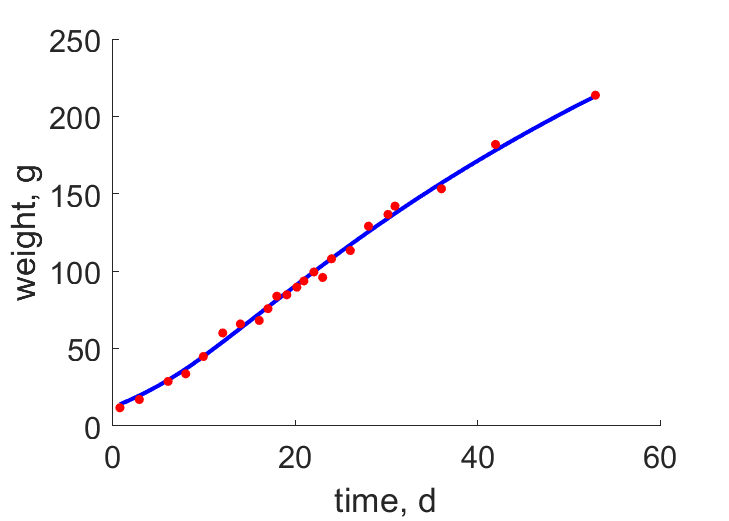Predictions & Data for this entry
| Model: std | climate: B | migrate: | phylum: |
| COMPLETE = 2.5 | ecozone: TPa | food: bxCi, xiHs | class: |
| MRE = 0.069 | habitat: 0iTa, 0iTd | gender: Dg | order: |
| SMSE = 0.009 | embryo: Tnsfm | reprod: O | family: |
Zero-variate data
| Data | Observed | Predicted | (RE) | Unit | Description | Reference |
|---|---|---|---|---|---|---|
| ab | 16 | 13.75 | (0.1408) | d | age at birth | avibase |
| tx | 21 | 21.31 | (0.01486) | d | time since birth at fledging | avibase |
| tp | 63 | 78.29 | (0.2427) | d | time since birth at puberty | guess |
| tR | 365 | 365 | ( 0) | d | time since birth at 1st brood | guess |
| am | 9125 | 9020 | (0.01146) | d | life span | guess |
| Ww0 | 12.5 | 19.01 | (0.5205) | g | initial wet weight | avibase |
| Wwb | 11.6 | 13.31 | (0.1473) | g | wet weight at birth | LloyDurr2000 |
| Wwi | 172 | 163.4 | (0.04987) | g | ultimate wet weight for females | avibase |
| Wwim | 180 | 180.1 | (0.0006262) | g | ultimate wet weight for males | avibase |
| Ri | 0.006849 | 0.00722 | (0.05413) | #/d | maximum reprod rate | Harr1975 |
Uni- and bivariate data
| Data | Figure | Independent variable | Dependent variable | (RE) | Reference |
|---|---|---|---|---|---|
| tW |  | time | weight | (0.02861) | LloyDurr2000 |
Pseudo-data at Tref = 20°C
| Data | Generalised animal | Pterocles namaqua | Unit | Description |
|---|---|---|---|---|
| v | 0.02 | 0.05062 | cm/d | energy conductance |
| p_M | 18 | 1352 | J/d.cm^3 | vol-spec som maint |
| k_J | 0.002 | 0.05573 | 1/d | maturity maint rate coefficient |
| k | 0.3 | 0.3017 | - | maintenance ratio |
| kap | 0.8 | 0.8227 | - | allocation fraction to soma |
| kap_G | 0.8 | 0.8006 | - | growth efficiency |
| kap_R | 0.95 | 0.95 | - | reproduction efficiency |
Discussion
- Feeding is reduced towards end of nestling period
- Males are assumed to differ from females by {p_Am} only
- mod_1: Pseudo-data point k is used, rather than k_J; Data set tp and parameter t_R are added, the latter replacing clutch interval t_N. Postnatal T is based on PrinPres1991, see get_T_Aves. See further the revision page, theme puberty
Bibliography